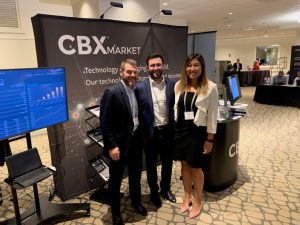Takeaways from the CFA’s Fixed Income Management Conference

Members of the IMTC (formerly CBXmarket) product and sales teams headed to Boston last week to attend the CFA Society’s Fixed Income Annual Conference, where presenters covered the evolving financial landscape and discussed the risks facing investors trying to navigate industry headwinds amid a period of prolonged uncertainty.
Like PIMCO CIO Marc Seidner said in his opening remarks, global economies are entering a “window of weakness” in 2020, and the low-growth environment leads to economies that are more vulnerable to adverse shocks. With trade and monetary policy being key swing factors in the global outlook, geopolitical risks are dragging on investor sentiment and adding to the challenges in the manufacturing sector, which include issues of inventory to production.
Credit spreads remain historically tight across investment grade and high yields credits alike, said Seidner, adding that the question remains of whether spreads are sustainable over the short-term. Meanwhile, Dodge & Cox VP Lucy Johns said that while current yield levels should caution investors to temper their expectations of long-term returns, looking towards global investment opportunities will “greatly expand the opportunity set.”
Our in-house investment expert and Senior Product Manager Kevin Bliss was privy to panels and sideline conversations, as speakers discussed options for hedging oneself against the risks of the most frequently used strategies in collateralized loan obligations (CLOs) and the tradeoff of sacrificing credit quality in the hunt for yield. Panels also covered topics ranging from reallocating assets for global diversification to enhancing fundamental research offerings within distressed debt and environmental, social, governance (ESG)-focused investments.

On the ESG front, Kathleen Bochman, VP and director of ESG at Loomis Sayles & Co, noted that there’s been a pointed shift in asset managers’ approach to impact investing. In fact, the UN’s Principles for Responsible Investment received fewer than 100 signatories in 2006 but reported nearly 2,500 signatories as of August 2019—and investment managers accounted for the bulk of participants. The sustainable investment landscape has over $2tn in fund AUM as of August 31, with the fixed income asset class accounting for $396bn of that total. While ESG fund adoption is growing globally, fixed income net flows outperformed other asset classes, with roughly $40bn YTD.
Bochman’s presentation noted that there’s been a shift in asset managers’ beliefs, with many now seeing an alignment between sustainable factors and fundamentals and a feeling that it’s better to engage than divest. Challenges remain—after all, best practices still need to be developed and the available industry data focuses on equity—but establishing global frameworks and executing case studies were among Bochman’s recommendations for combating these hurdles.
The Future of Quantitative Approaches to Fixed Income by BlackRock’s Tom Parker was also one of the highlights for the team. Parker discussed the importance of rules-based, data driven investments but ultimately concluded that quantitative strategies have shortfalls that demand a human touch in order to be most effective. This was particularly salient for our team given our focus on creating cutting-edge solutions that enable investment managers to reach peak performance.
Overall, there was a consensus that staying active in investing and using data to complement your investment process can help managers capitalize on outliers and protect themselves from highly correlated investments. “In turn, this would help guide investors through even the most difficult environments, ultimately improving the likelihood of outperforming one’s respective benchmark in the long run,” said Bliss.





